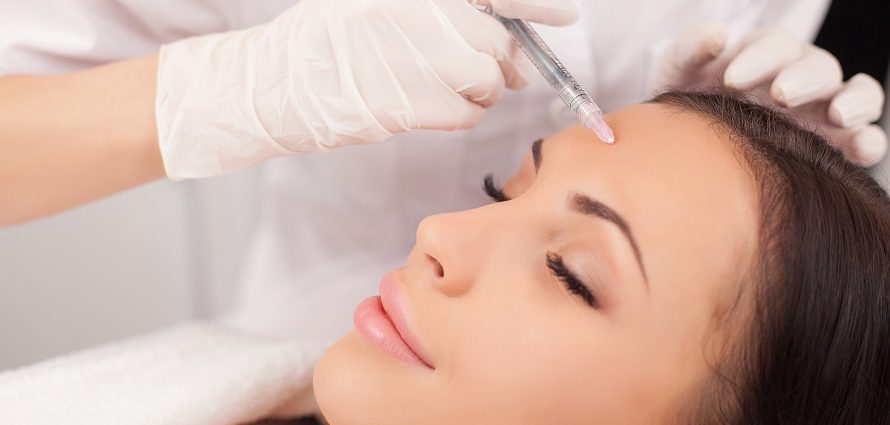Facial Fillers and Injectables – What Is the Right One for You?

Today’s crop of injectables can help erase fine lines and wrinkles, plump up sunken cheeks and fill in folds.
Numerous types of injectables are available and each works a different way. Some paralyze the muscles that cause wrinkles. Others, known as soft tissue or dermal fillers, add volume to the skin and fill in wrinkles, folds, scars and other depressions. (To learn more about injectable fillers, visit our cosmetic dermal fillers FAQ.)
There are things that injectables can’t help with. They can’t repair sagging skin along the jaw, neck, chin or brow. For these reasons, they are often paired with other plastic surgery procedures such as rhinoplasty, eyelid lift or facelift as part of a more comprehensive treatment plan.
Neurotoxin Injectables
Neurotoxins paralyze the muscle contractions that create wrinkles. These injectables all contain botulinum toxin type A. Currently there are three FDA-approved neurotoxins for use in aesthetic plastic surgery: Botox Cosmetic, Dysport and Xeomin. Their effects typically last about three to four months. There are several other neurotoxins being studied including a topical form of botulinum toxin type A.
While Botox Cosmetic, Dysport and Xeomin are considered quite safe, they carry a “black box” warning from the FDA due to a rare side effect in which the injected material spreads and causes potentially serious swallowing and breathing problems. For more information about this warning, please visit our page on the FDA review of Botox. Also, visit our page on Botox clinical trials to learn about ongoing tests of Botox for medical treatments.
Hyaluronic Acid-Based Injectables
Other popular types of injectables work by temporarily filling increases, wrinkles and folds. One such class is known as hyaluronic acid-based injectables.
Hyaluronic acid is a naturally occurring substance found in the connective tissues of the body. As we age, our body’s natural supply of hyaluronic acid decreases.
Hyaluronic acid-based fillers include Juvederm, Juvederm Voluma, Restylane, Restylane-L, Restylane Silk, Restylane Lyft with lidocaine, Perlane, Prevelle Silk and Belotero Balance. They are typically used to add volume to nasolabial folds (the creases that run from the sides of the nose to the corners of the mouth), marionette lines and under-eye hollows. Some can also be used to plump up thinning lips. Results last four months or longer, depending on the filler.
Your plastic surgeon or dermatologist will help you choose which hyaluronic acid-based filler is best for your needs.
Collagen Boosters
Another type of filler works by increasing our natural supply of collagen, the main structural protein found in skin. As the skin ages, collagen breaks down, leading to wrinkles, lines and folds. Collagen-boosting injections help replenish the skin’s dwindling supply of collagen. These typically pack a one-two punch against aging skin, providing immediate volume while stimulating the skin to produce more collagen.
Radiesse, for example, contains microspheres of a naturally occurring mineral known as calcium hydroxylapatite in a water-based gel. In addition to adding volume to the skin when initially injected, it also stimulates the body to produce more collagen.
Bellafill also boosts the natural supply of collagen. It consists of millions of synthetic microspheres (polymethylmethacrylate or PMMA) suspended in purified bovine (cow) collagen. It immediately adds volume to the skin to lift wrinkles and the PMMA microspheres create a matrix that supports your body’s own collagen production.
Another collagen booster, Sculptra, contains beads or microparticles of poly-L-lactic acid (a biocompatible, biodegradable polymer) that naturally break down, spurring the body to produce more collagen.
At one point, injectable collagen fillers were all the rage, but other types of fillers have now surpassed them in popularity.
“Natural” Injectables
Autologous or natural injectables involve the use of your own body tissues to rejuvenate the appearance of the face. One example is fat. When performing fat transfer, a surgeon removes fat cells from the stomach, buttocks or thighs and re-injects them elsewehere in the body where fat is in shorter supply. Fat fillers are used to add volume to sunken cheeks, fill in facial lines and enhance lips. They can also be used in combination with breast implants for breast enhancement.
Laviv is an injectable that is made from your own skin cells. The cells are taken from behind the ear and sent to a lab, where more cells are grown and placed in a solution. Next, the surgeon injects the cells into the face to treat nasolabial folds.
Vampire injections, also known as vampire facelift and Dracula therapy, are made of your own blood. The surgeon first removes blood. He or she then processes it to separate out the platelet-rich plasma (PRP). The PRP is re-injected into the face, where it provokes collagen production and gives the face a fresher, more youthful appearance.
Find a Surgeon
If you are considering facial fillers and injectables, consult with a board-certified plastic surgeon who is certified by the American Board of Plastic Surgeons. Your surgeon will examine your face and determine which facial injectable or injectables is best suited to your needs.
Start your search now. Please consult our directory to find a surgeon in your area.


